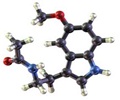A study has led to the discovery that cataplexy during status cataplecticus partially resembles normal rapid eye movement (REM) sleep
Cataplexy is a sudden temporary loss of muscle tone in the body, which occurs during times of intense emotional states like laughter or anger. Such muscle weakness can cause: head nodding, drooping eyelids, difficulty in speaking, difficulty in moving arms or hands or a weakened grip and buckling of the knees.
Cataplexy is a major symptom of narcolepsy, which is a compulsive disorder to fall asleep. In narcolepsy there are compulsive sleep attacks and the person has an irresistible urge to sleep even in the most unlikely circumstances like driving.The National Heart Lung and Blood Institute estimated that nearly three out of four people with narcolepsy also have cataplexy.
The first efforts to identify the neural structures and pathways underlying cataplexy during status cataplecticus in a narcoleptic patient, with the use of brain perfusion single photon emission computed tomography (SPECT), have led to the discovery that cataplexy during status cataplecticus, a case of prolonged cataplexy, partially resembles normal rapid eye movement (REM) sleep but without the other imaging characteristics of this state, according to a study published in the February 1st issue of the journal SLEEP.
The study, conducted by Dorothée Chabas, MD, PhD, of Université Pierre et Marie Curie-Paris, and Assistance Publique Hôpitaux de Paris, focused on a 68-year-old woman with hypocretin-deficient narcolepsy-cataplexy, who suffered status cataplecticus after having stopped clomipramine. The woman underwent a 99mTc-ethylcysteinate dimmer brain SPECT during an episode of cataplexy. This image was compared with her brain SPECT during an intervening asymptomatic period. Subtraction SPECT coregistered to magnetic resonance imaging (MRI)-determined anatomic areas differentially perfused during cataplexy and basal wakefulness state.
According to the brain MRI results, the areas hyperactivated during cataplexy correspond to the cingular area, the left and right orbitofrontal cortex, the right temporal cortex and the right putamen, which are all activated during normal REM sleep. There was, however, no hyperactivation of the pons, amygdale or occipital cortex, other imaging characteristics of normal REM sleep.
'To my knowledge, this report is the first of imaging analysis comparing brain activation during a cataplectic episode with a nonsymptomatic state in the same subject,' said Chabas. 'Previous imaging studies have failed to show structural changes in the brain of narcoleptic patients, but functional changes could be demonstrated. The method used in this particular study analyzed functional features specifically related to the mechanisms of cataplexy. Picturing brain activity during cataplexy, a transient and unpredictable neurologic state, is challenging. It is, however, easier to study cataplexy during status cataplecticus.'
Advertisement
Source-Eurekalert
PRI/M











